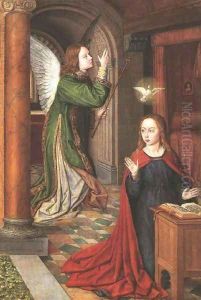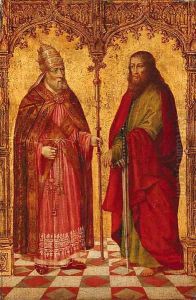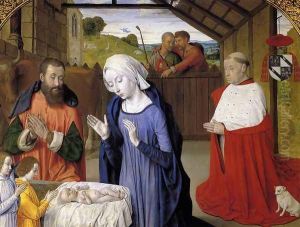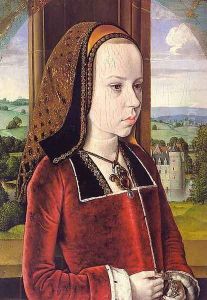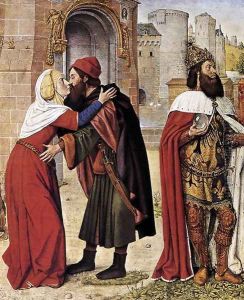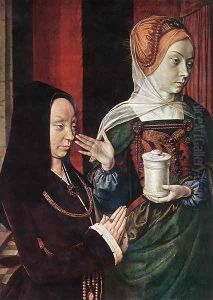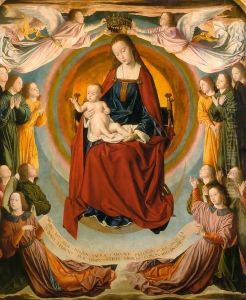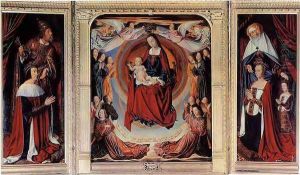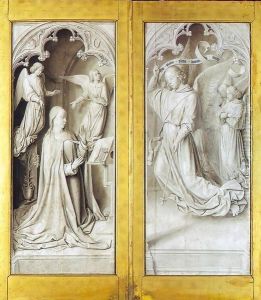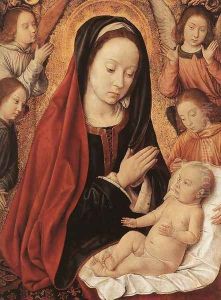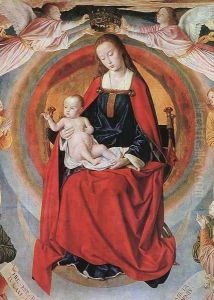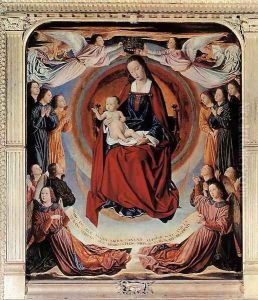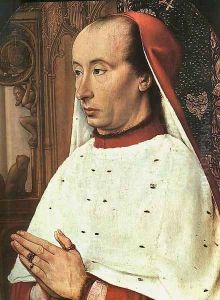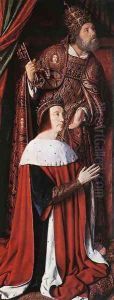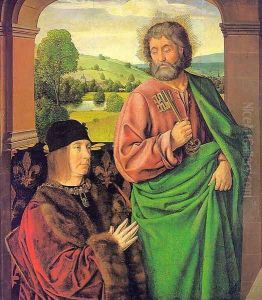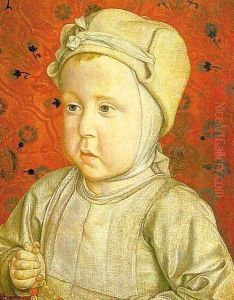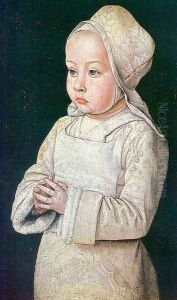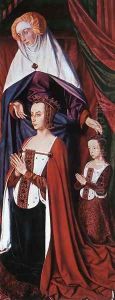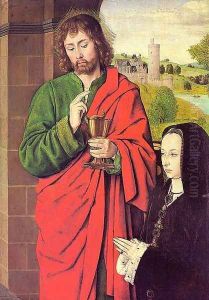Master of Moulins (Jean Hey) Paintings
The Master of Moulins, also known as Jean Hey, was a Netherlandish painter who was active during the late 15th century in France. Not much is known about his early life, including the exact date and place of his birth, which is estimated around 1475. He earned the name 'Master of Moulins' from his significant work at the Cathedral of Moulins in central France. His identity remained a mystery until the late 20th century when art historians associated him with Jean Hey, a painter from the North who worked in France.
The Master of Moulins is best known for his highly refined and emotionally expressive portraits and religious scenes, which reflect a synthesis of Early Netherlandish painting techniques and the French court style. One of his most famous works is the 'Moulins Triptych' (1498-1499), which depicts the Madonna and Child surrounded by angels and patron portraits. He was particularly skilled in the use of rich colors, detailed landscapes, and the delicate portrayal of fabrics and surfaces, which was indicative of his training in the Northern Renaissance tradition.
Despite his obvious talent and the high quality of his work, the historical record of the Master of Moulins is sparse. He is believed to have worked for the Bourbon court, and his style suggests that he may have been trained by or associated with the workshop of Hans Memling, a leading Flemish painter. After the completion of the Moulins Triptych, very little is known about his career. The last known record of Jean Hey is from 1505, and the date of his death is unknown. His legacy, however, lives on through the handful of masterpieces that have been attributed to him, which continue to be studied and admired for their artistic significance and beauty.
